Lessons
Our series are curated collections of lessons that walk through a specific topic from beginning to end. Series are a great way to learn a topic in a structured way.




Editing & Updating Courses
In this lesson, we'll add the ability to edit and update a course within the active organization.


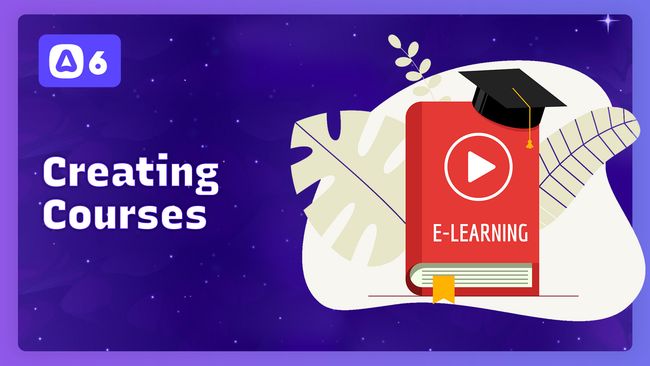

Creating A New Course
In this lesson, we'll add the ability to create a new course within the active organization.




Querying & Listing An Organization's Courses
In this lesson, we'll query the active organization's courses and list them out in a table.


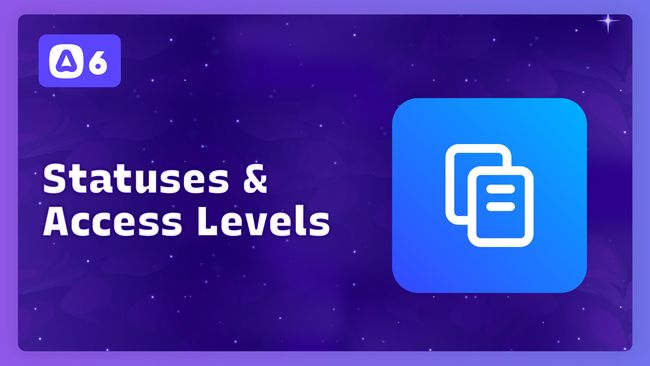

Replicating Behaviors for Access Levels & Statuses
In this lesson, we'll replicate everything we've done for difficulties to add our access levels and statuses.


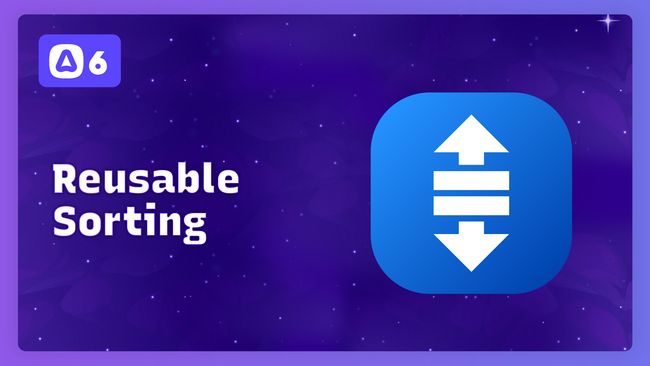

Creating A Reusable Sorting Vue Component
In this lesson, we'll extract the drag-and-drop logic we added in the last lesson into a reusable Vue component so we can easily make use of the same behavior for our access levels & statuses.


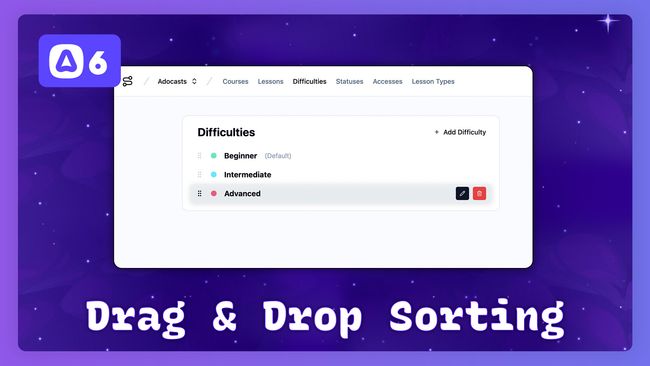

Sorting Difficulties with Drag & Drop
In this lesson, we'll allow our user's to customize the ordering of their difficulties via drag-and-drop using VueDraggable. When they commit a change by dropping an item, we'll persist the updated sort to our database.


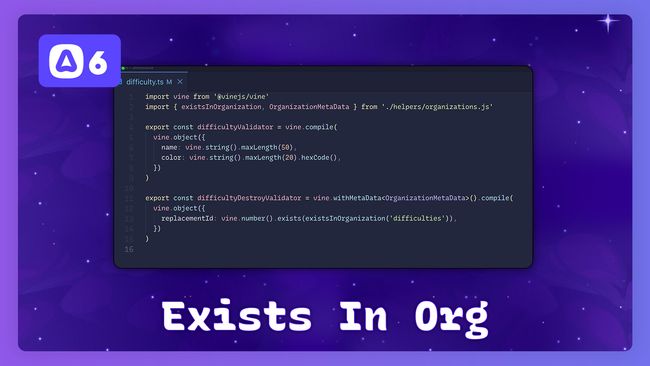

Reusable VineJS Exists In Organization Validation
In this lesson, we'll take our difficulty's exists in organization VineJS validation and make it reusable so we can easily use it for our statuses, access levels, courses, etc.


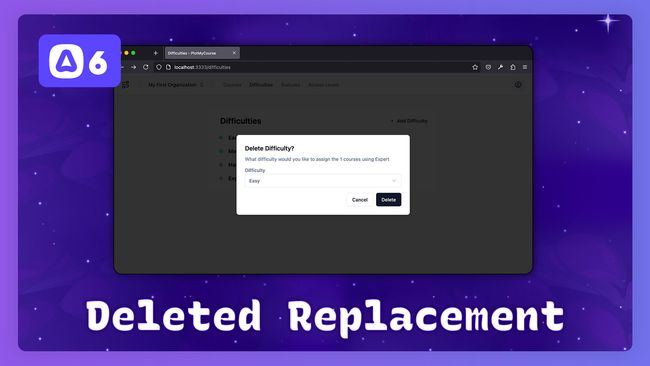

Replacing A Course's Deleted Difficulty
In this lesson, we'll add the ability to gracefully handle instances where a required relationship's record is being deleted. When a difficulty is being used by a course, we'll have our users select a replacement difficulty for the one being deleted.


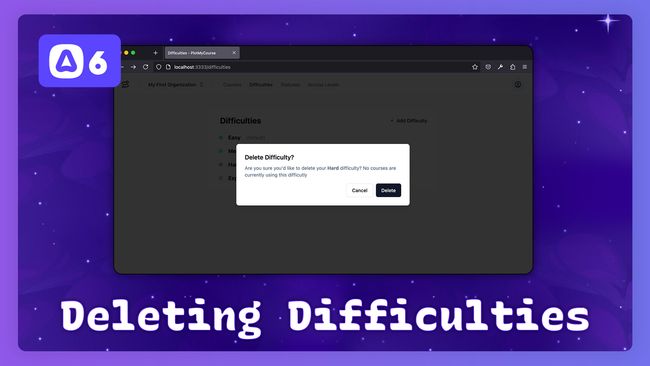

Confirming & Deleting Difficulties
In this lesson, we'll add the ability to delete an organization's difficulties. We'll also make use of our ConfirmDeleteDialog component to confirm the deletion action with our user.




Updating Difficulties
In this lesson, we'll add the ability to update an organization's difficulties using our useResourceActions composable.


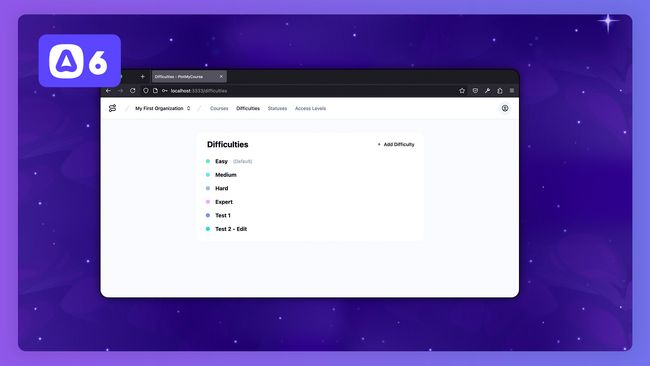

Listing & Creating Difficulties
In this lesson, we'll create a page to list the active organization's difficulties. Then, we'll add the ability to create a new difficulty and add a new color picker type to our FormInput component.


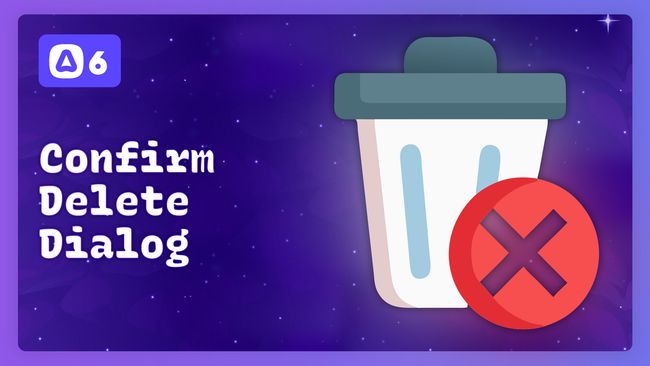

The Confirm Delete Dialog & Deleting the Active Organization
In this lesson, we'll create a reusable confirm deletion dialog and bind its state into our use resource actions composable. We'll then incorporate this all together to allow users to delete their active organization.


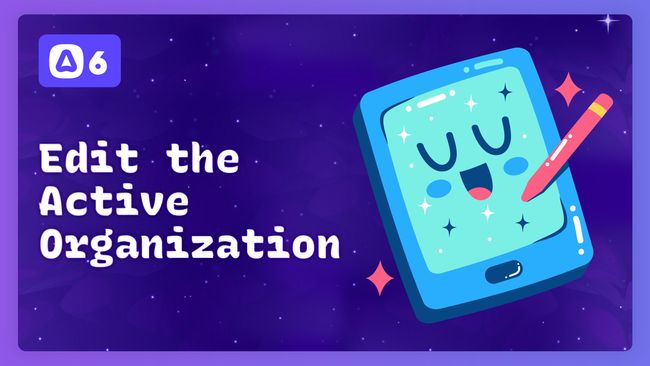

Editing the Active Organization
In this lesson, we'll make use of our useResourceActions composable to add the ability for our user's to edit their active organization.


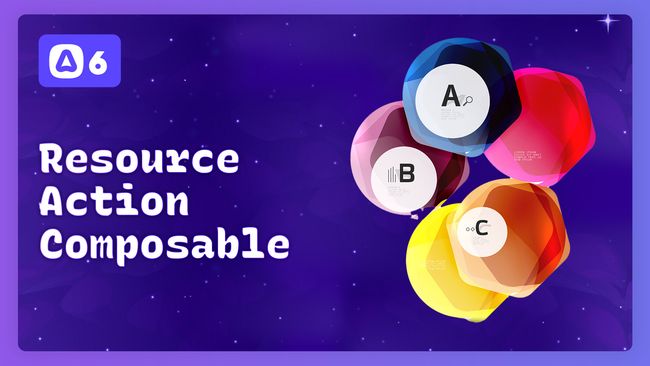

Creating A UseResourceActions Composable
In this lesson, we'll create a composable that'll be in charge of maintaining form and dialog state for the resources throughout our application, starting with our organizations.




AdonisJS In 30 #9.0
How To Add Social Authentication with AdonisJS Ally & Google
In this lesson, we'll learn how we can use AdonisJS Ally to add social authentication to our applications. We'll use Google for our demonstration, but this same process also applies to GitHub, Facebook, Discord, LinkedIn, Twitter, & more




Switching Between Organizations
In this lesson, we'll add the ability for our users to change which of their organizations is their active organization via our organization selector.


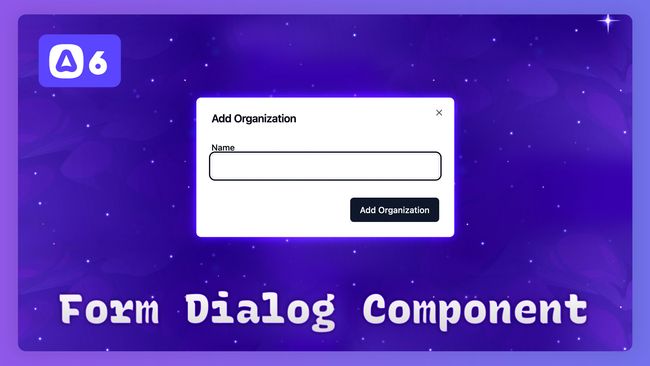

The Form Dialog Component & Adding Organizations
In this lesson, we'll add a new form dialog component that simplifies the create and update forms we'll use throughout our application. We'll then use this component to add a create organization dialog within our organization selector.


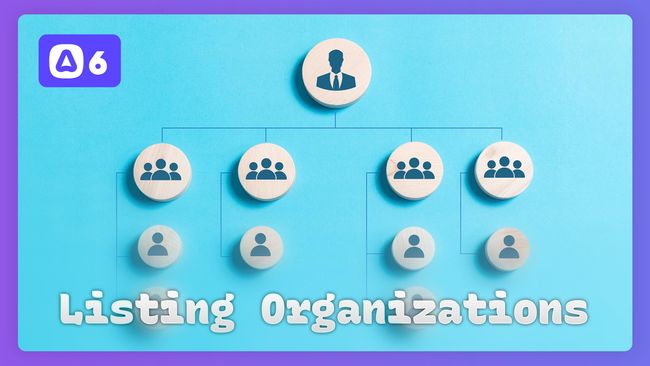

Listing the User's Organizations
In this lesson, we'll update our organization middleware to query all the user's organizations. We'll then provide everything into our Vue page state via Inertia and begin building our organization select component.
Showing 109 to 126 of 434 results